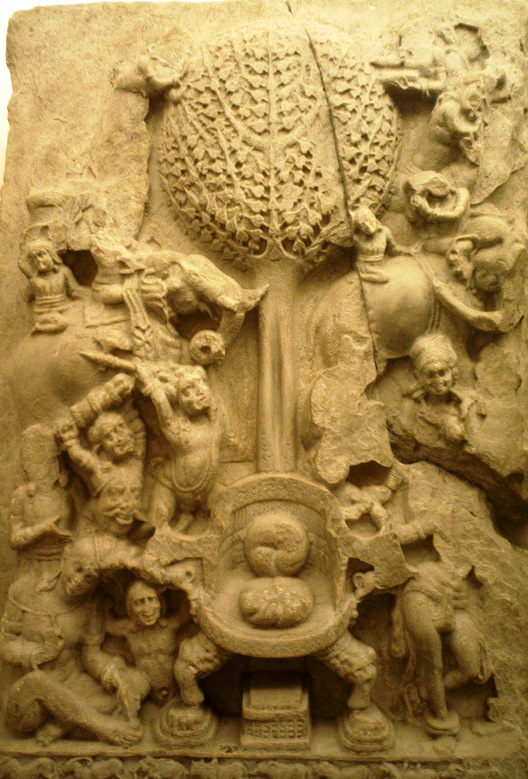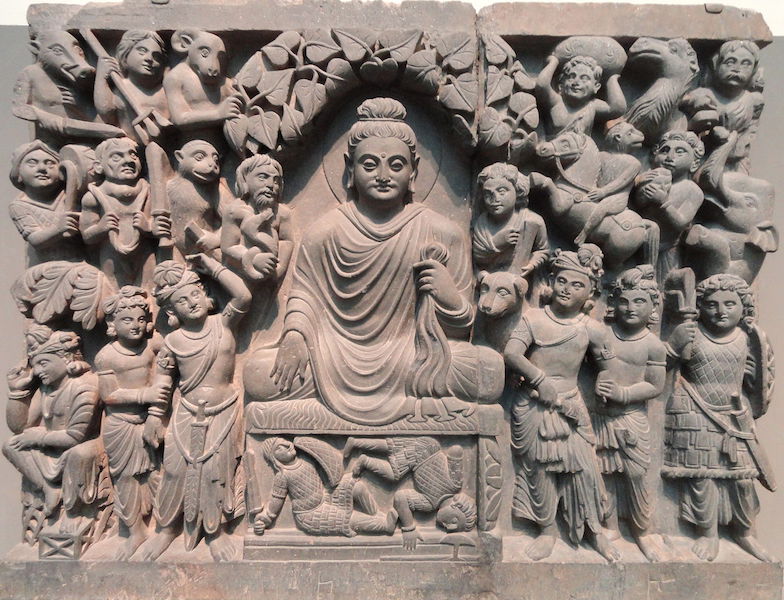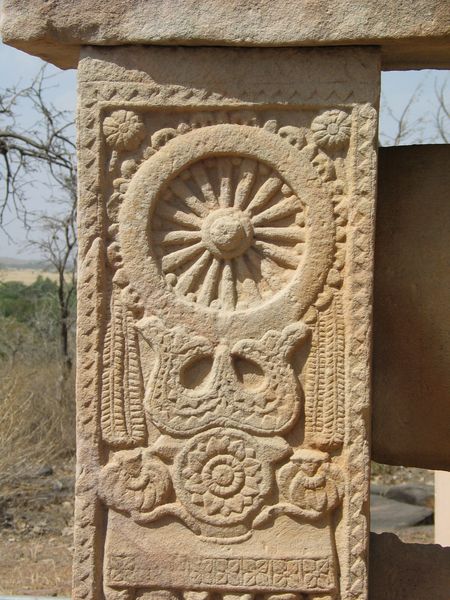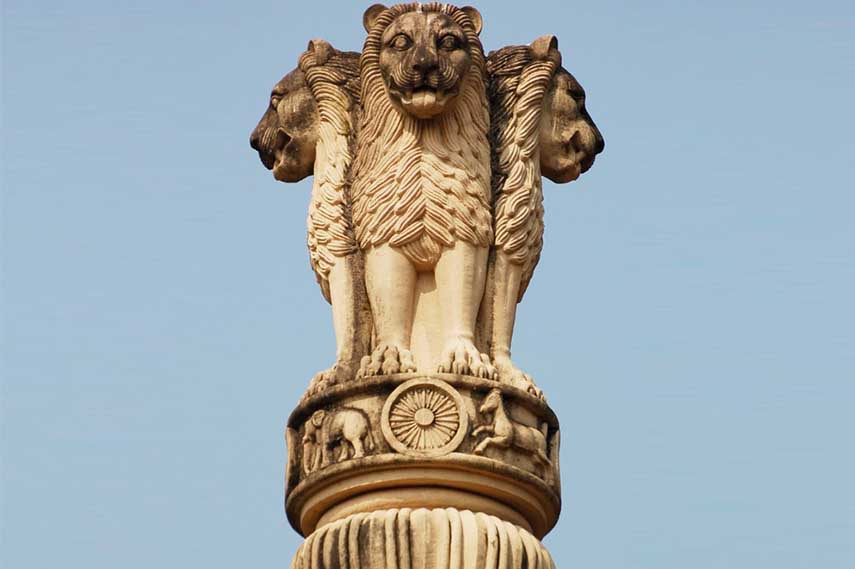By Nagasen (Sajib Barua)
Around the 5th century BE (Before Enlightenment), there were many different seekers, sages, and students attempting to find a way to liberation from birth and death–– some believed in a creator deity, whereas others believed that liberation was possible by one’s efforts. The Buddha, soon after his enlightenment, proclaimed to his first five disciples the newly discovered Dhamma, by which he himself was transformed. Buddhism regards the birth of a human as precious and rare. After being born as a human being, one can train their mind to end the suffering in the cycle of birth and death, known as samsara. Buddhism also teaches that one continues to be born and suffer greatly from attachments, aversions, and dissatisfaction until one has destroyed the defilements.

A humanistic religion
The Buddha is the best example of humanity; being born as a human being, he transformed himself by attaining enlightenment.
Buddhism is seen as a humanistic religion because Prince Siddhattha, the founder of Buddhism, was fundamentally human. After reaching a state of complete awareness and awakening as One via the discovery of the Dhamma, he became Shakyamuni Buddha. Buddhism is human-problem-and-solution-focused; its practice and promotes moderation and mindfulness to end problems.
Buddhism is also considered as a non-theistic religion because of its core principles, which value the human ability to solve existential problems without relying on external gods. Buddhism emphasizes the development of humanity’s ability to transcend suffering through the practice of the Dhamma. When essential qualities are being advanced through the development of an awakening mind, particularly compassion, love, care, and affection for themselves and other human beings, our problems can be resolved.
Prince Siddhattha
According to the earliest texts, Prince Siddhattha was the only child in the royal family of Gautama, born on the full moon day. His parents were King Suddhodāna and Queen Māyā of Noble House Shakya, a caste of warriors and minor aristocrats. In his childhood, Prince Siddhattha was raised in great luxury inside an opulent palace. His father prevented him from learning about human suffering and tried to keep him focused on his kingly future. Prince Siddhattha was an excellent student who mastered political and martial subjects and possessed the skills to inherited the throne.
The swan story is a famous episode in Siddhattha’s life. When he was young, he argued with his cousin Devadatta on the issue of the true owner of a swan. It was shot and seriously injured by Devadatta before falling down at Prince Siddhattha’s feet. Seeing the injured swan, the prince picked it up and nursed it back to health. Devadatta claimed that the swan belonged to him but the prince argued that the swan must belong to the person who saved its life, not its hunter. There is a large number of Buddhist jātakas that records several stories connected to the Buddha’s virtue in previous lives.

The realities of old age, sickness, and death
The turning point of Prince Siddhattha to become the Buddha occurred during a short visit to the city with his charioteer Channa. While visiting the city and a countryside, Prince Siddhattha was shocked by the sight an aged man for the first time. Overcome with curiosity, he asked Channa about the man’s problem. Channa explained that this was called an old man, as all are destined to age. The prince was shocked and disturbed. The next following day, on the same round, he saw a sick man and made another inquiry to Channa. Channa explained that this is called sickness. On his third visit, he witnessed a dead body. The realities of sickness, old age, and death sickened and traumatized the prince. Finally, he saw an ascetic and was inspired to leave the household life.
From the first three objects he witnessed, one can imply that every object holds different meanings that can be used to teach Dhamma on life stages—starting from the old age, sickness, and finally, death. The three objects were meaningful to him due to his curiosity and insightful thinking. He perceived the object as being himself and understood that one day he would also grow old, get sick, and die. Inspired by the last sight, the mendicant, he decided to leave the palace.
An ascetic life
Finally, he made the great renunciation leaving his wife and newborn baby for this nobler path. He shaved off his hair and beard and became the ascetic Gautama. While living an ascetic life he approached different teachers to learn the path to liberation. According to Ariyapariyesana sutta of the Majjhima nikāya, he approached two famous teachers, Ālāra kālāmaand Uddakā Rāmaputta. He learnt Ālāra Kālāma’s doctrine within a short length of time and subsequently attained the “sphere of nothingness” (ākiñcaññāyatana). He realized that this attainment was unable to end suffering, so he went to Uddakā Rāmaputta. He quickly learned and attained the sphere of neither perception nor non-perception” (nevasaññānāsaññāyatana). After reaching these stages of concentration, he realized that these also would not lead him to end suffering, the achievement of “Dispassion, to the fading of lust, to the cessation, to peace, to direct knowledge, to enlightenment, to Nibbana.” After travelling through the Magadha heartland and reaching Senānigāma near Uruvelā, he discovered a delightful grove and a river with pleasing bank. There was a village nearby for alms rounds. He practised the austerity of self-mortification, which was believed to be one of the ways for liberation. When five ascetics Kondaññā, Vappa, Bhaddiya, Mahānāma and Assaji were aware of Buddha’s renunciation, they joined him to practice the austere life.
He did this for six long years, to the point of almost collapsing. Nursed back to health by the offering of a simple girl, Sujata, Gautama realized that self-mortification would not lead him to liberation. He ended his extreme practice and chose the adoption of the Middle Way, leading to his five companions deserting him.
Enlightenment

The Buddha sat down under the Bodhi tree to continue his meditation and subsequently attained enlightenment on the full moon day. At the first watch of the night, he developed the supernormal knowledge of remembering uncountable past lives. In the middle of the night, he gained the clairvoyant supernormal vision of death and the rebirth of plenty of beings. At last, he attained the supernormal knowledge leading to the destruction of passions and reached enlightenment. The following description of the Buddha’s attainment is often seen as a core early component of his early teaching:
“Origination, origination,” O bhikkhus, with regard to dhamma’s unheard of before, Eye arose in me, knowledge arose, wisdom arose, understanding arose, light arose, (samudayo, samudayo’ti kho me, bhikkhave, pubbe ananussutesu dhammesu cakkhuṃ udapādi, ñāṇaṃ udāpadi, paññā udāpādi, vijjā udapādi, aloko udapādi)
“Cessation, cessation,” O bhikkhus, with regard to Dhammas unheard of before, eye arose in me, knowledge arose, wisdom arose, understanding arose, light arose. (nirodho, nirodho’ ti kho me…)
After the enlightenment, he is known as enlightened or awakened, buddha (PPP < √budh ‘awake’). This epithet signifies that he arrived completely at a new state or domain of being. This creative realization of the Dhamma made him become a “new man,” traceless. According to the Buddha’s own claim, this new product of creativity is truly “new,” unique in this historical epoch. He also became a supreme human being who became the teacher of gods and humans’ satthā devamanussānaṃ.‘ The Buddha was the first person to call himself the teacher of gods and human beings.
In the Donasutta of the Aṅguttara-nikāya, the brahmin Dona asks the Buddha, sequentially, whether he is a deva, or a gandhabba, or a yakkha, or even a human – in terms of the categorization of beings known in the world at that time. Buddha replies negatively in each case, indicating that he cannot be fitted into all these categories. The following are the series of questions by Doṇa:
“Could you be a deva, sir?”
“I will not be a deva, brahmin.”“Could you be a gandhabba, sir?”
“I will not be a gandhabba, brahmin.”“Could you be a yakkha, sir?”
“I will not be a yakkha, brahmin.”“Could you be a human being, sir?”
“I will not be a human being, brahmin.”“What, then, could you be, sir?”
The Buddha continued to answer negatively each time the Brahmin Doṇa asked according to every categorization. The Buddha explained to him that the Buddha had destroyed the defilements by which he could be a deva, human or others.
“Brahmin, I have abandoned those taints because of which I might have become a deva; I have cut them off at the root, made them like palm stumps, obliterated them so that they are no longer subject to future arising . . . I have cut them off at the root, made them like palm stumps, obliterated them so that they are no longer subject to future arising. Just as a blue, red, or white lotus flower, though born in the water and grown up in the water, rises above the water and stands unsoiled by the water, even so, though born in the world and grown up in the world, I have overcome the world and dwell unsoiled by the world. Remember me, brahmin, as a Buddha.”

Very clearly, the Buddha claims here that he is a new being, beyond all categorizations. He is a product of creative transformation and can only be described as a “buddha.” He is the only one who is perfectly, fully enlightened. He became the Buddha without the aid of any external beings but due to his own effort. His state of perfection is well defined by the word sammāsambuddha which means perfectly, fully enlightened one. Ven. Walpula Rahula recorded the Buddha’s achievement as follows: “He attributes all his realization, attainments and achievements to human endeavour and human intelligence. A man and only a man can become a Buddha, if he so wills it and endeavours.”
As the nine qualities of the Buddha state:
itipi so bhagava araham, samma-sambuddho, vijja-carana sampano, sugato, lokavidu, anuttaro purisa-dhamma-sarathi, sattha deva-manussanam, buddho, bhagava
The Buddha is known as the Fortunate one, worthy one, perfectly full enlightened One, endowed with knowledge and conduct, well-gone one, knower of the world, supreme charioteer for the persons to be tamed, teacher of god and human beings, Enlightened One, and Fortunate One.
The Brahmāyu sutta of the Majjhima Nikāya says that the Brahmin Brahmāyu was aware of the Buddha’s declaration, and heard about the thirty-two characteristics of the Buddha. Due to his health condition and the old age, Brahmāyu sent one of his pupils, namely Uttara, to investigate the report on the Buddha’s thirty-two marks. Uttara found that the Buddha indeed had the thirty-two marks and followed the Buddha’s practice closely for seven months, never leaving the Buddha’s side.
Concluding thoughts
In conclusion, Buddha seriously felt existential anguish, and did not want to continue taking birth in saṃsāra anymore. Determined to find a way out of saṃsāra, he succeeded through his own resolve. He became a Buddha asa an ordinary being, a “newer” being through his creativity and perseverance. His discovery of the precious Dhamma was of cosmic importance. Nowadays, the world honors and reveres the Buddha for being the teacher of gods and humanity.
See more
Donasutta (SuttaCentral)

